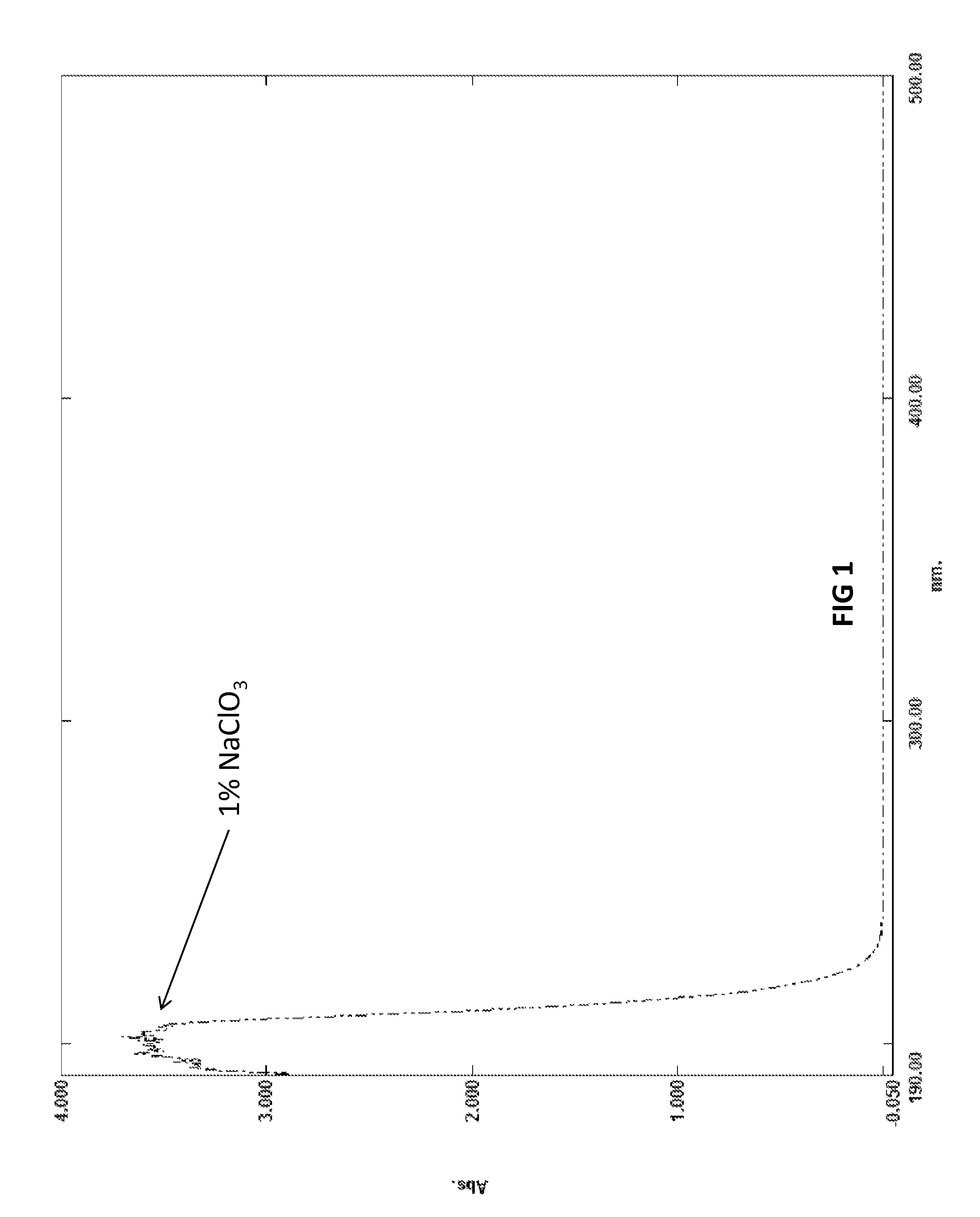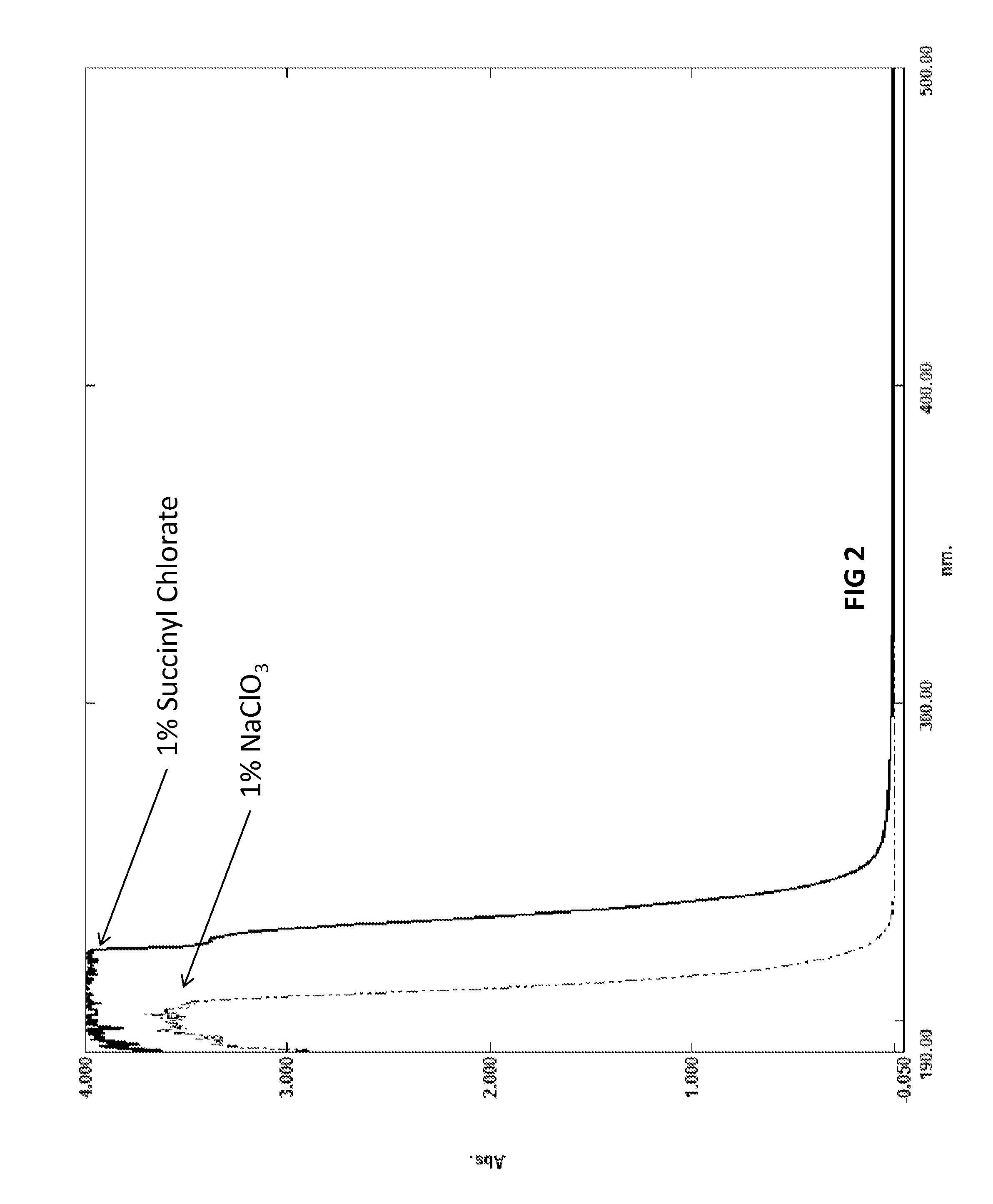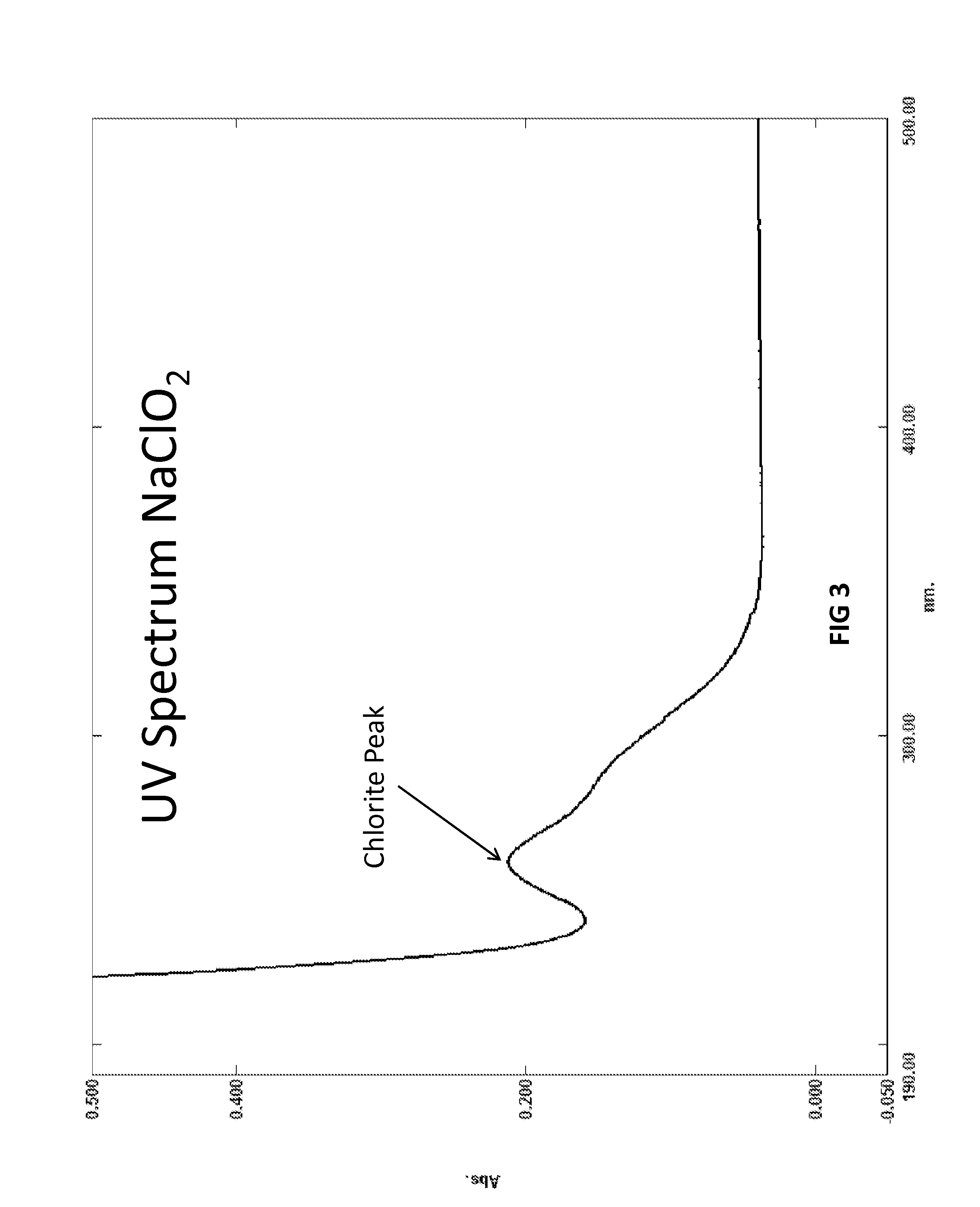Biocide and bleach compositions and related methods
a technology of compositions and biocide, which is applied in the field of biocide compositions and methods, can solve the problems of high volatility of chlorine dioxide, health concerns, and extreme danger, and achieve the effects of improving efficiency, high level of antimicrobial and bleaching efficacy, and excellent stability
- Summary
- Abstract
- Description
- Claims
- Application Information
AI Technical Summary
Benefits of technology
Problems solved by technology
Method used
Image
Examples
example 1
[0185]Organic acyl donors comprising fatty acids are useful in biocide and bleach applications. Many of the more difficult stains to remove during bleaching and the ability to permeate lipid membranes of microbes requires organic acyl polyoxychlorine compounds that are hydrophobic and lipophilic. Medium chain fatty acids comprising C6 to C12 carbon chains and longer chain fatty acids comprising C14 to C24 are very useful in these applications and are low cost to purchase. However, solubility limitations of the acids reduce the concentrations that can be used during the production, and final formulating of bleach and biocide compositions.
[0186]A technique was developed that has proven very useful in processing medium chain and long chain fatty acids into organic polyoxychlorine compounds.
[0187]Organic polyoxychlorine compounds comprising medium chain fatty acids and long chain fatty acids can be produced from fatty acids in relatively high concentrations utilizing the following non-l...
example 2
[0190]Many acid anhydrides have slight to limited solubility in water. They slowly hydrolyze to their parent acid. When succinic anhydride is added in a granular / flake form to water that has been treated with sodium chlorate, the tendency is to either coalesce and sink to the bottom, or entrap gas and float. Since the chlorate anions must collide with the acid anhydride to convert the succinic anhydride to the desired succinyl chlorate, large clumps of succinic anhydride reduce the efficiency of conversion and subsequent yield of the succinyl chlorate. In this case, extended time will be required to convert the succinic acid produced by the hydrolysis of the succinic anhydride. One way to improve the dispersion of a solid form of acid anhydride is to reduce the particle size of the acid anhydride and combine the acid anhydride with a surfactant.
[0191]A mixture was made by combining 5 grams of succinic anhydride with 0.5 ml of Pluronic 31R1 which is a block copolymer of polyethylene ...
PUM
| Property | Measurement | Unit |
|---|---|---|
| octanol/water partition coefficient | aaaaa | aaaaa |
| octanol/water partition coefficient | aaaaa | aaaaa |
| contact time | aaaaa | aaaaa |
Abstract
Description
Claims
Application Information
 Login to View More
Login to View More - R&D
- Intellectual Property
- Life Sciences
- Materials
- Tech Scout
- Unparalleled Data Quality
- Higher Quality Content
- 60% Fewer Hallucinations
Browse by: Latest US Patents, China's latest patents, Technical Efficacy Thesaurus, Application Domain, Technology Topic, Popular Technical Reports.
© 2025 PatSnap. All rights reserved.Legal|Privacy policy|Modern Slavery Act Transparency Statement|Sitemap|About US| Contact US: help@patsnap.com



